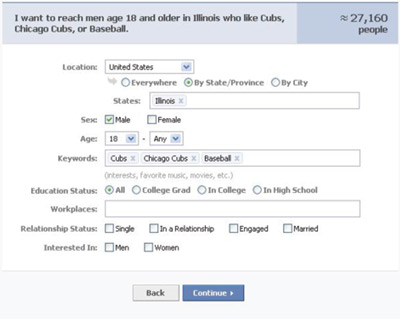A Social Community for Webmasters!
To avoid the scattershot approach, choose one or two social networking sites that fit your business well and invest the time to maximize your presence in them. Let's explore what that might look like if Facebook is one of your choices.
Prepare Your Best Information Before You Start
Avoid the "I will go back and fill that in later" trap. Have all your necessary information on hand, ready to copy and paste on the spot. Complete a worksheet containing:
1. Key Terms:
Make a list of your best key terms and weave them into the rest of your worksheet items. Key terms are one, two, or three word terms that someone might use if they were searching for your business in a search engine.
2. General Information:
Your Name
Business Name
Email Addresses
URLs
Instant Messaging screen names
3. Biographical and Descriptive Information:
Short bio (50 words)
Longer bio (100 words)
Short company description (50 words)
Longer company description (100 words)
Business mission statement
4. List of Products
I based these worksheet items on a typical Facebook profile and page. If you choose a different social networking site, examine some completed profiles and base your worksheet items on them.
Get Search Engine Rankings You Can Be Proud Of!
Create an Account and Thoroughly Complete Your Profile
If you haven't already, get a Facebook account. Completely fill out your profile using your worksheet. Under the relationships tab, choose "networking." You can skip the personal and education tabs for business profiles, but there is no harm in filling them out. If you have an existing account, upgrade your profile information using your key terms.
But don't stop there!
Facebook, like most good social networking platforms, offers many marketing opportunities for businesses - some for free. You can find these by clicking the "Advertising" link in the footer of the Facebook site, or by following this link: http://www.facebook.com/business/.
Since I can't cover all of the marketing tools in one article, let's focus on my favorite: The Facebook Page. It's my favorite not only because it is free, but because it makes use of the many diverse Facebook applications.
Facebook pages are specifically for marketing a business or a product. They offer a way for a business to represent itself to the Facebook community in an authentic way. Facebook users can search pages the same way they search for people within the network community.
Create your page by going to "Page Manager" in the left sidebar of your Facebook profile, or by following this link: http://www.facebook.com/business/ and choosing Facebook Pages. Choose the best category for your business.
Use Key Terms in the Name of Your Facebook Page!
It seems that the actual page name is the only text on a Facebook page that is used in a search. With that in mind, use at least two of your best key terms in your page name.
Populate your page with all of your best worksheet information. You may have only a few seconds to catch a reader's attention, so put your best key terms forward.
Forget Expensive PPC Advertising - There is an Alternative!
Once your page is in place, add applications to help represent your company in your own unique way. To find applications for your page, click on "Applications" in the upper left corner of your page, or search for them here: http://www.facebook.com/apps/.
Applications are not difficult to install and are usually very easy to set up. Use this general rule of thumb when choosing an application: If you can't figure out how to set it up after the second try, find another one. There is often more than one application available to accomplish the same task.
Applications Top Picks:
My Flickr: Display photos from your Flickr account using this application. These photos can include logos, product photos, photos from events, etc.
Upcoming: Add all of your events to upcoming.org, and you can easily display them on your Facebook page with Upcoming's Facebook application.
YouTube Box: Allows visitors to play your YouTube videos right on your Facebook page.
Simply RSS: This allows you to display up to eight RSS feeds on your Facebook page and display the feeds from your business's main site and newsrooms.
Implementing these applications creates an interactive page that also gives visitors a personable look into your business. To see all of these applications in use on one page, visit Dalton Publishing.
Note: If you use a particular application regularly, consider donating to the application's creator - they do not get paid to develop these applications.
Promoting Your Social Networking Presence
Now that you have invested the time in creating an impressive presence on Facebook (or whichever social networks you chose), go the extra mile and research how you can promote your new presence both inside and outside of the network. Here is a link to Facebook's promotional guidelines.
Of course, invite everyone on your mailing lists to join your network and visit your sharp new page!
Don't Turn Your Back on Your Investment
Remember: The social Web is a fickle place! You need to keep your content dynamic and interesting in order to encourage people to return to your page, or to recommend it to their friends. Do this, and you will see better results than those who just move on to building their next profile. Once you have a good, healthy presence in one community, use your experience to move on to your next successful presence.
About The Author :
Deltina Hay is the principle of the companies Dalton Publishing and Social Media Power. She has worked in programming and Web development for 25 years. Ms. Hay's graduate education includes computer science, applied mathematics, and psychology. To discover the power of Web 2.0 and social media tools, visit SocialMediaPower.com.

